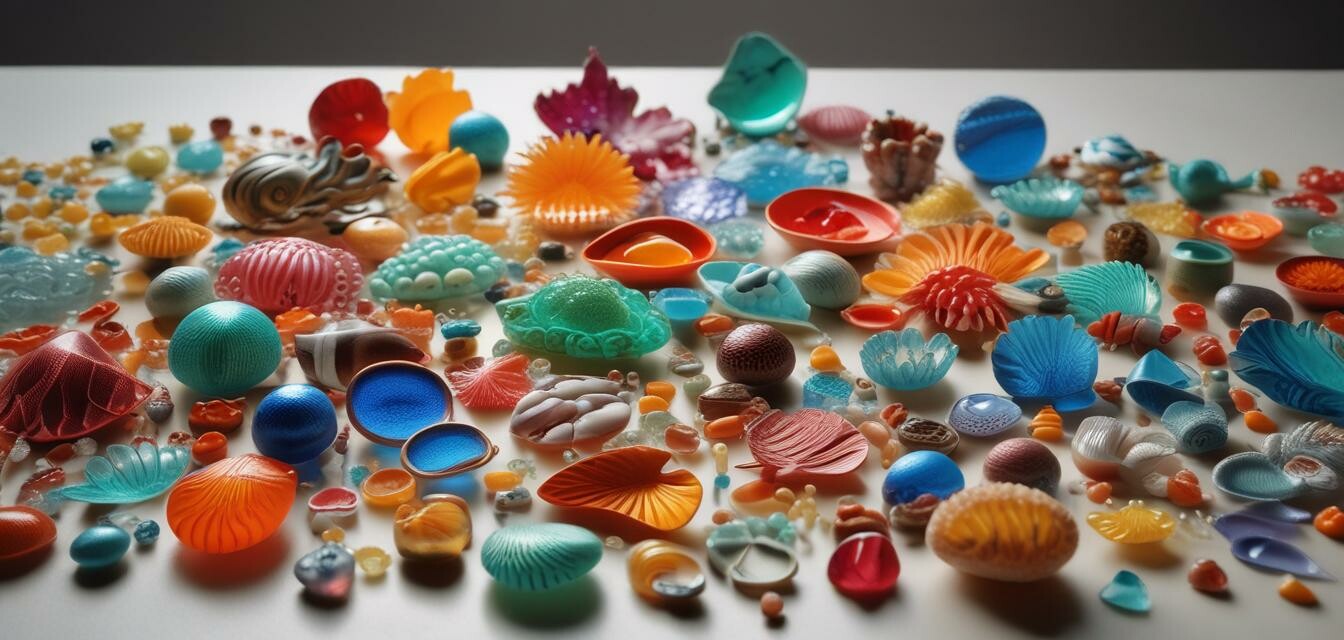
Creative Strategies for Using Found Objects in Glass Molds
Key Takeaways
- Found objects can add unique textures and designs to glass art.
- Experimenting with different materials leads to innovative results.
- Understanding the properties of your materials is essential for success.
- Finding creative uses for everyday items expands your artistic potential.
- Document your processes for future reference and inspiration.
In the world of glass art, the possibilities are vast and varied. With the right techniques and a touch of creativity, you can turn ordinary objects into extraordinary glass pieces. This article will explore innovative strategies for incorporating found objects into glass molds, allowing you to produce unique textures and designs in your glass art.
What Are Found Objects?
Found objects are everyday items that can be repurposed or reimagined into new artistic creations. In glass molding, these objects can influence the texture, shape, and overall design of the glass art you create. From leaves and feathers to jewelry and natural stones, the range of found objects is only limited by your creativity.
Benefits of Using Found Objects in Glass Molds
- Unique Textures: Found objects can create interesting textures and patterns in your glass pieces.
- Personal Touch: Personal items can add sentimental value to your work, making each piece unique to you.
- Cost-Effective: Utilizing everyday objects can save on material costs without sacrificing creativity.
- Eco-Friendly: Repurposing materials contributes to sustainability by reducing waste.
Creative Techniques for Incorporating Found Objects
There are several creative methods to integrate found objects into your glass molds. Here are some strategies to inspire your next glass project:
| Technique | Description | Tips |
|---|---|---|
| Imprinting | Press found objects into the glass surface to create textures. | Use flat objects for more defined imprints. |
| Layering | Place objects between layers of glass to add depth. | Experiment with different glass colors for unique effects. |
| Inclusions | Integrate small objects into glass during the melting process. | Ensure all materials are compatible with high temperatures. |
| Suspension | Suspend objects within glass to create floating designs. | Use the right thickness of glass to avoid breakage. |
Finding Inspiration in Everyday Life
Inspiration often lies in the most unexpected places. Here are a few suggestions to help you discover potential found objects:
- Take walks in nature and collect interesting leaves, rocks, or twigs.
- Visit thrift stores or flea markets for unique trinkets.
- Look around your home for items you no longer use.
- Join local artist groups or workshops to exchange materials.
The Importance of Experimentation
Once you've collected your found objects, it's essential to embrace experimentation. Each piece you create will teach you something new:
- Don't be afraid to mix and match different materials.
- Take notes on processes, results, and any adjustments made.
- Allow yourself to create without fear of failure; each attempt is a learning opportunity.
Documenting Your Process
Keeping a record of your creative journey is beneficial for several reasons:
- It allows you to track your progress over time.
- You can return to successful techniques and build upon them in future projects.
- It serves as inspiration for new ideas and approaches.
Final Thoughts: Bringing Your Vision to Life
The incorporation of found objects into glass molds opens up a world of creativity and innovation. By merging artistic expression with resourcefulness, glass artists can produce one-of-a-kind pieces that truly reflect their individuality. So gather your found objects, ignite your imagination, and start transforming your craft today!
Pros
- Encourages creativity and artistic expression.
- Creates unique textures and individual styles.
- Promotes sustainable and eco-friendly practices.
- Cost-effective and accessible to all artists.
Cons
- Some found objects may not withstand high temperatures.
- Finding the right materials can sometimes be challenging.
- Might require additional adjustments for compatibility with glass.
If you’re looking to further enhance your glass-making skills, be sure to check out our detailed categories on glass molds, glass kilns, and fusing and slumping supplies. Remember, the journey of glass art is a personal and exquisite one. Happy crafting!

